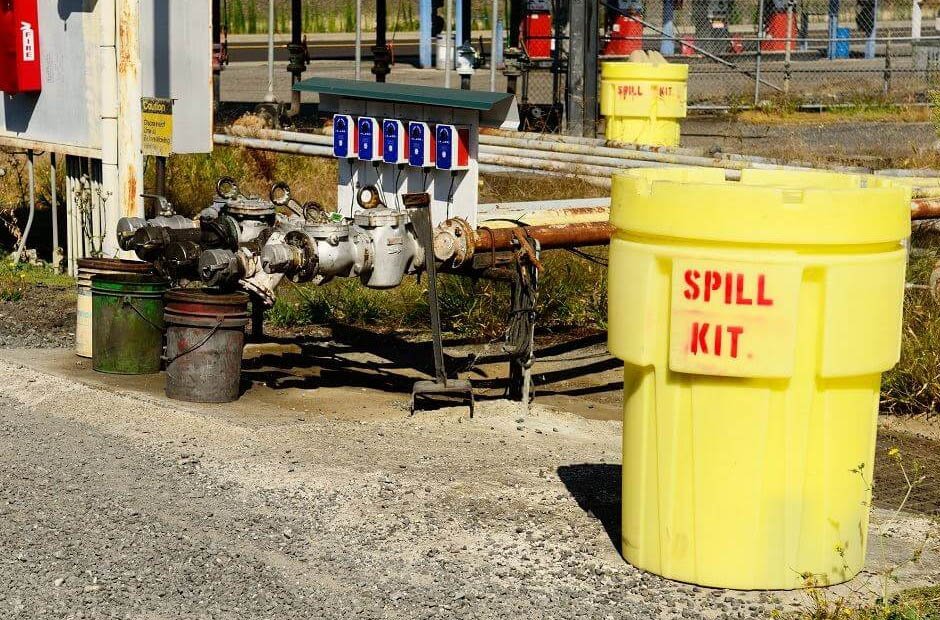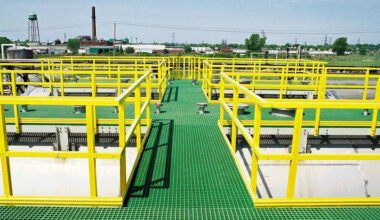Spills and overfills at fuel, chemical, and liquid storage sites are high-consequence events: they damage the environment, create safety hazards, disrupt operations, and trigger expensive cleanups and fines. Preventing them requires an integrated program that combines robust engineering, reliable detection and control equipment, disciplined operational procedures, and regular training and maintenance. Below is a technical, practical guide to the core strategies operators and facility managers should implement to minimize the risk of spills and overfills.
1. Start with a risk-based assessment
A targeted prevention program begins with a risk assessment that identifies where and how overfills or leaks could occur. Key inputs include:
- Inventory of stored liquids, volumes, and transfer frequencies.
- Tank types and age (single-wall, double-wall, fiberglass, steel), piping layouts, and product compatibility.
- Historical failure data, maintenance records, and prior incident reports.
- Site-specific factors: groundwater depth, proximity to receptors (wells, drains, waterways), and climate (freeze/thaw cycles that stress seals).
Use the assessment to rank hazards and prioritize engineering upgrades, procedural controls, and monitoring. For underground storage systems (USTs) in particular, site-specific risk profiles drive containment, monitoring, and inspection frequency choices.
2. Design for containment and redundancy
Engineering controls reduce the probability of release and limit consequences if one control fails.
Primary and secondary containment
- Use double-walled tanks and piping where feasible. Secondary containment (a vault or double wall with interstitial space) provides an immediate barrier if the primary wall is breached.
- For aboveground storage tanks (ASTs), secondary containment berms or dikes sized to contain at least the largest tank volume plus freeboard are industry standard.
Overfill prevention devices (OPDs) and automatic shutoffs
- Install reliable OPDs on transfer lines and fill risers. OPDs provide a physical or automatic trip that stops flow when a tank reaches a preset level (commonly 90-95% capacity), preventing liquid into ullage space and minimizing pressure-related failures.
- Use mechanical automatic shutoff nozzles or electrically actuated valves linked to level sensing as appropriate.
High-integrity fill hardware
- Use shear/flapper valves to prevent backflow, pressure-relief devices sized and set correctly, and properly rated couplings designed to minimize spillage during connection and disconnection.
3. Instrumentation: continuous monitoring and alarms
Detection and timely alarm notification are essential to catch overfill attempts and slow leaks before they become large spills.
Level sensors and high-level alarms
- Employ redundant level sensing: one continuous level transmitter (ultrasonic, hydrostatic, or radar) plus a high-level switch/float for independent trip action.
- Configure alarms for both local (on-site horn/strobe) and remote (operator mobile, SCADA, or facility control room) notification to ensure rapid human response.
Interstitial and leak detection
- For double-walled systems, monitor interstitial space with electronic sensors or periodic liquid sampling. Continuous interstitial monitoring with automatic alerts dramatically reduces the time between a breach and detection.
- For single-wall tanks, use sumps with liquid sensors, and consider line leak detectors and automatic line fill-stop devices.
Transfer flow monitoring
- Use flow totalizers and reconciliation systems during transfers. Sudden unexplained discrepancies between delivered and received volumes are a classic early indicator of leaks or theft.
4. Operational controls and procedures
Even the best hardware fails if operations are sloppy. Written procedures and enforced protocols are indispensable.
Standard operating procedures (SOPs)
- Define step-by-step instructions for transfers: who authorizes fills, how to confirm equipment condition, pre-transfer checks, fill rates, and post-transfer verification.
- Limit filling operations to trained personnel and require a two-person rule for high-risk transfers.
Fill rate and scheduling
- Moderate fill rates reduce sloshing and pressure transients that can compromise tank seals. Many operations use controlled rates (e.g., <25–50% of the tank’s rated fill rate) for large-volume transfers.
Pre- and post-transfer inspections
- Require visual checks of fittings, containment berms, hoses, and overfill prevention devices before every significant transfer. After transfers, verify tank levels and inspect for visible evidence of leaks.
Permit-to-work and isolation practices
- Use permit systems for major maintenance, hot work, or when line isolation is required. Ensure mechanical isolation, tagout, and confirmation of valves before work begins.
5. Training and human factors
People are the first line of defense. Well-structured training programs reduce human error and ensure effective emergency response.
Competency training
- Train operators on tank system design, overfill prevention hardware, instrumentation principles, SOPs, and alarm response protocols.
- Reinforce the importance of accurate recordkeeping (delivery logs, reconciliation, inspection checklists).
Scenario-based drills
- Conduct periodic drills that simulate leaks and overfills. Drills help test alarm notification chains, valve-actuation procedures, and spill mitigation steps under stress.
Regulatory and certified training
- For facilities operating underground storage systems, specialized coursework focused on UST operation, inspection, and spill prevention is valuable. Consider formal courses such as a Texas underground storage training course to ensure staff understand regional requirements and best practices for USTs.
6. Inspection, maintenance, and testing
Preventative maintenance keeps overfill prevention devices and monitoring equipment reliable.
Routine calibration and functional checks
- Level sensors, high-level switches, and leak detectors must be function-tested and calibrated on a scheduled basis. Implement logs for each device with dates, results, and corrective actions.
Integrity testing
- Conduct periodic tank tightness testing and pressure testing of piping per manufacturer and regulatory guidance. For USTs, perform interstitial integrity testing and cathodic protection audits where fitted.
Replace aging components proactively
- Components such as gaskets, hoses, and float switches have finite lifespans—replace them based on service hours and observed wear rather than waiting for failure.
Vendor and parts control
- Use OEM-approved replacement parts and maintain an inventory of critical spares (sensors, float switches, valve actuators) to minimize downtime after a failed device.
7. Recordkeeping, reconciliation, and data analytics
Good data helps detect anomalies early and supports regulatory compliance.
Delivery reconciliation
- Maintain detailed delivery manifests and reconcile against tank gauge readings and sales or usage logs. Statistical reconciliation software can flag variances that suggest leaks or measurement errors.
Inspection and maintenance logs
- Keep auditable logs of inspections, tests, calibrations, and repairs. Regular reviews of these logs can reveal recurring weak points or systemic issues.
Trend analysis
- Use simple analytics to track slow trends in losses or frequent alarms. Early trends (e.g., gradually increasing fill adjustments) can indicate a developing leak or a sensor drift.
8. Emergency response and containment planning
Even with prevention, prepare for the worst.
Spill response plans
- Maintain an up-to-date spill response plan with clear chain of command, containment materials (absorbents, booms), shutoff locations, and sampling/notification requirements.
On-site spill kits and containment
- Store spill kits near transfer points and fill areas. Train staff to deploy containment boom, absorbent socks, and temporary berms quickly.
External notifications and regulatory reporting
- Know local reporting thresholds and required agencies. Rapid notification to environmental agencies can reduce penalties and expedite response resources.
9. Continuous improvement
Prevention is not a one-off project. Use audits, incident investigations, and technological advances to iterate.
Post-incident reviews
- Investigate near-misses and incidents thoroughly. Create corrective action plans and track closure.
Adopt new technologies
- Evaluate advances such as wireless tank monitoring, machine-learning anomaly detection, and improved sensor chemistries to reduce false alarms and improve sensitivity.
Benchmark and audit
- Periodically third-party-audit systems against industry best practices and update procedures accordingly.
Conclusion
Spill and overfill prevention is multidisciplinary: it requires sound engineering, dependable monitoring, precise procedures, skilled personnel, and disciplined data practices. The best programs layer redundant protections—containment, automatic hardware, continuous monitoring, careful operations, and robust emergency planning—so a single failure won’t become an environmental disaster. Investing in training, routine testing, and data-driven inspection will pay off by preventing incidents, protecting personnel and the environment, and keeping operations compliant and efficient. If you manage underground storage systems, specialized training such as a Texas underground storage training course can be a practical next step to strengthen your prevention program and ensure your team understands both the technical and regulatory dimensions of UST safety.



